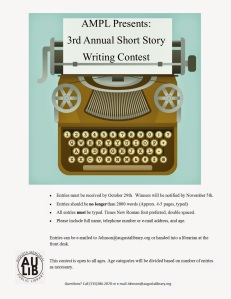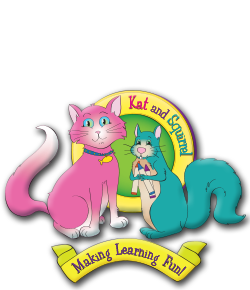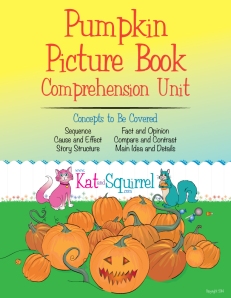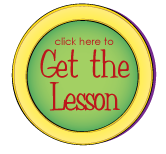Create a pumpkin lap book with these pages to have some fun with comprehension this fall!
I’ve used this unit for the past 2 years and the students love – love – love it! During our designated half-hour “intervention” time I am lucky enough to be in charge of the group of first graders who are reading above grade level. I enjoy exposing them to new vocabulary words and comprehension skills.
Of course, what first-grade teacher doesn’t love a good seasonal project? We know that tapping into the students’ ever-evolving interests helps to keep them fully engaged. And at this time of year the humble pumpkin stands on center stage!
The following favorite pumpkin picture books can be used to engage your students while strengthening their comprehension skills: (Oh – and you can easily click the links embedded in the book titles for info. about where to purchase the books. – Don’t ya just love technology!)
Sequence
Pumpkin Pumpkin by Jeanne Titherington
From Seed to Pumpkin (Let’s-Read-and-Find-Out Science 1) by Wendy Pfeffer
The Pumpkin Book by Gail Gibbons
Pumpkin Circle: The Story of a Garden by George Levenson
Pumpkin Jack by Will Hubbell
Pumpkin Cat by Anne Mortimer
From Seed to Pumpkin (Welcome Books: How Things Grow) by Jan Kottke
Story Structure
Pumpkin Soup by Helen Cooper
Too Many Pumpkins by Linda White
Pumpkin Trouble by Jan Thomas
The Fierce Yellow Pumpkin by Margaret Wise Brown
The Stubborn Pumpkin (Hello Reader, Level 3) by Laura Geringer
Pumpkin Hill by Elizabeth Spurr
Fact and Opinion
Seed, Sprout, Pumpkin, Pie (Picture the Seasons) (National Geographic Kids) by Jill Esbaum
The Very Best Pumpkin by Mark Kimball Moulton
How Many Seeds in a Pumpkin? (Mr. Tiffin’s Classroom Series) by Margaret McNamara and G. Brian Karas
Pumpkin Day! by Nancy Elizabeth Wallace
I Like Pumpkins by Jerry Smath
The Pumpkin Fair by Eve Bunting
Compare and Contrast
The Biggest Pumpkin Ever by Steven Kroll
Strega Nona’s Harvest by Tomie de Paola
The Legend of Spookley the Square Pumpkin by Joe Troiano
Little Boo by Stephen Wunderli
The Problem with Pumpkins: A Hip & Hop Story by Barney Saltzberg
Cause and Effect
The Halloween Performance by Felicia Bond
Pumpkin Fiesta by Caryn Yacowitz
Pumpkin Town! Or, Nothing Is Better and Worse Than Pumpkins by Katie McKy
The Runaway Pumpkin by Kevin Lewis
The Pumpkin Blanket by Deborah Turney Zagwyn
Pumpkin Day, Pumpkin Night by Anne Rockwell
 Also included:
Also included:
Guided Writing (Main Idea and Details)
Award-winning Kat and Squirrel story.
(This story was the winner of the AMPL Short Story Writing Contest!)
Bonuses:
“Favorite Pumpkin Story” bar graph
2 Color Sheets to use to decorate the folders
Goals of the lesson
RL.1.1. Ask and answer questions about key details in a text.
RL.1.2. Retell stories, including key details, and demonstrate understanding of their central message or lesson.
RL.1.3. Describe characters, settings, and major events in a story, using key details.
RI.1.1. Ask and answer questions about key details in a text.
RI.1.2. Identify the main topic and retell key details of a text.
RI.1.3. Describe the connection between two individuals, events, ideas, or pieces of information in a text.
RL.1.4. Identify words and phrases in stories or poems that suggest feelings or appeal to the senses.
RL.1.5. Explain major differences between books that tell stories and books that give information, drawing on a wide reading of a range of text types.
RI.1.4. Ask and answer questions to help determine or clarify the meaning of words and phrases in a text.
RI.1.5. Know and use various text features (e.g., headings, tables of contents, glossaries, electronic menus, icons) to locate key facts or information in a text.
RI.1.6. Distinguish between information provided by pictures or other illustrations and inform
ation provided by the words in a text.
RL.1.7. Use illustrations and details in a story to describe its characters, setting, or events.
RL.1.9. Compare and contrast the adventures and experiences of characters in stories.
RI.1.7. Use the illustrations and details in a text to describe its key ideas.
RL.1.10. With prompting and support, read prose and poetry of appropriate complexity for grade 1.
RI.1.10. With prompting and support, read informational texts appropriately complex for grade 1.
RF.1.1. Demonstrate understanding of the organization and basic features of print.
RF.1.4. Read with sufficient accuracy and fluency to support comprehension.
W.1.2. Write informative/explanatory texts in which they name a topic, supply some facts about the topic, and provide some sense of closure.


